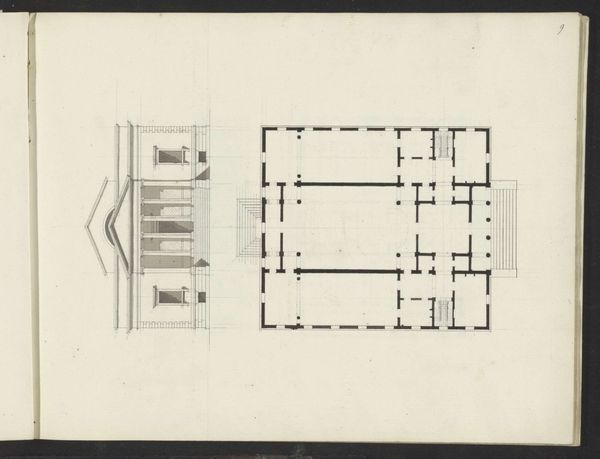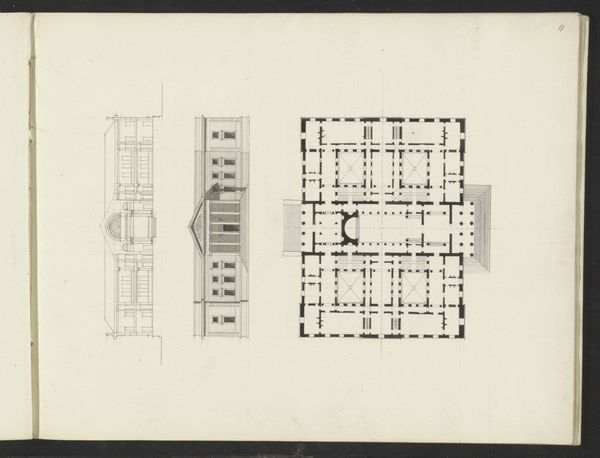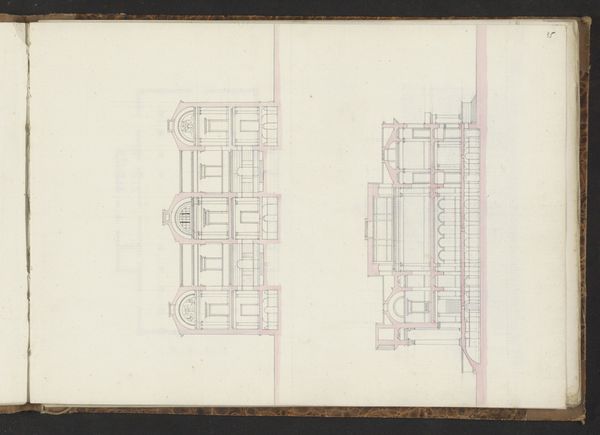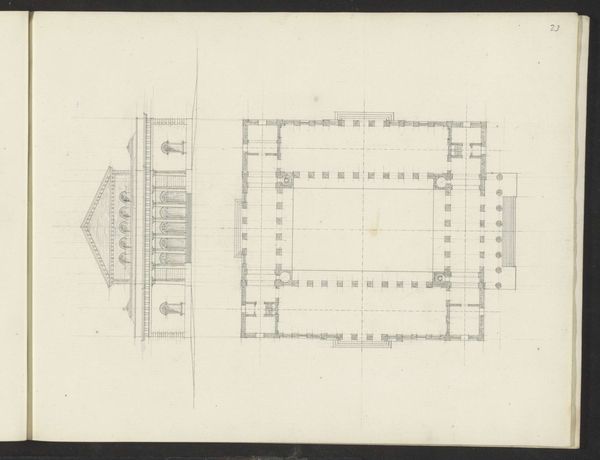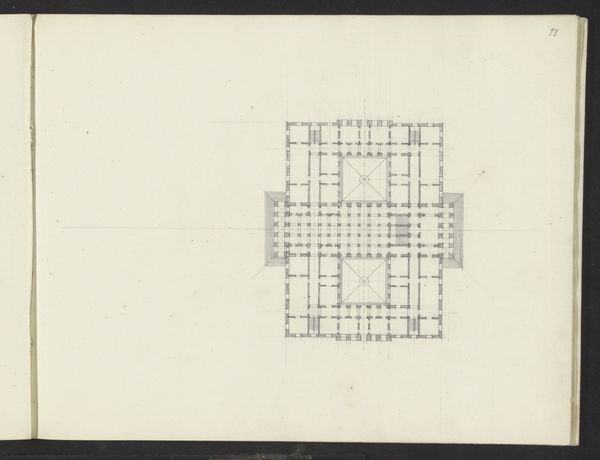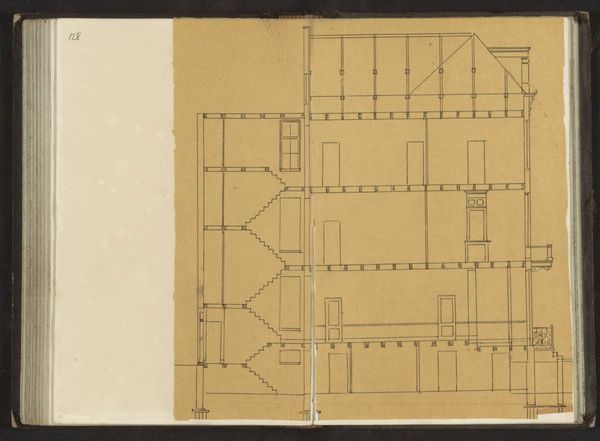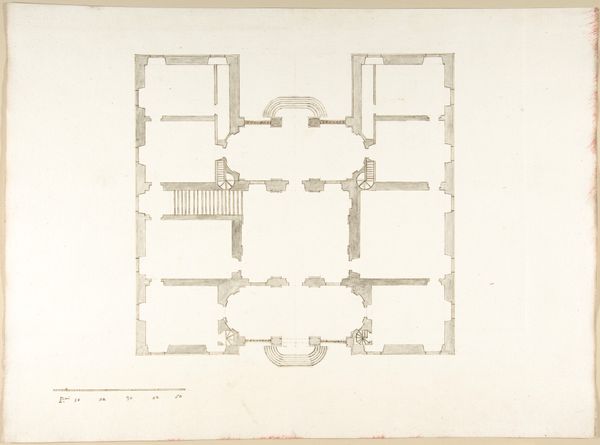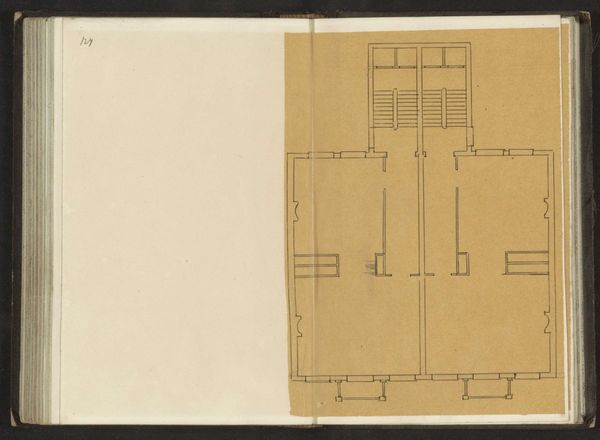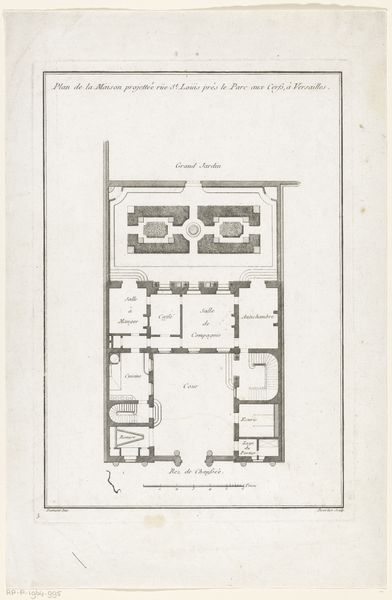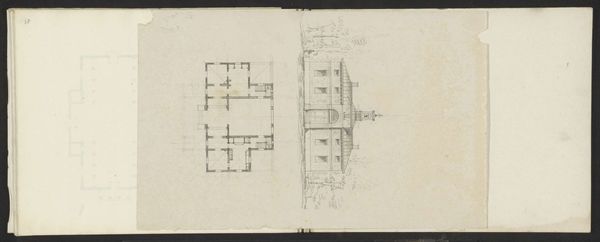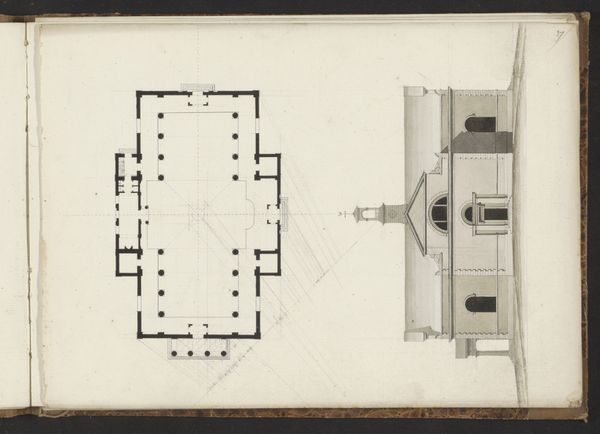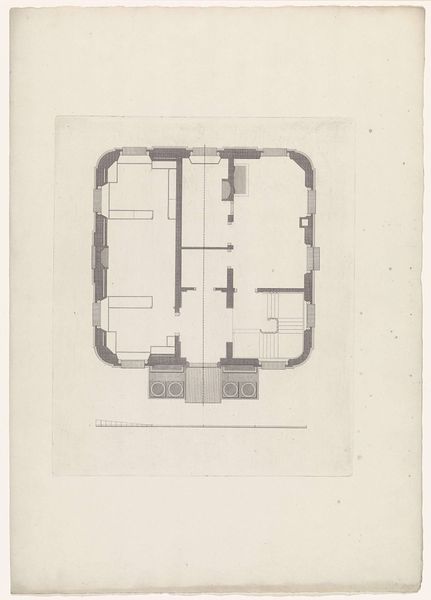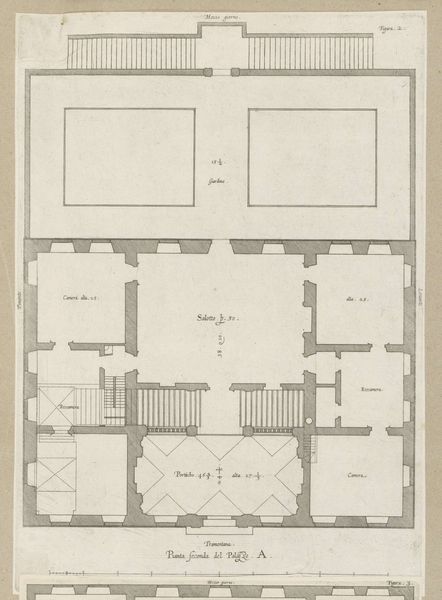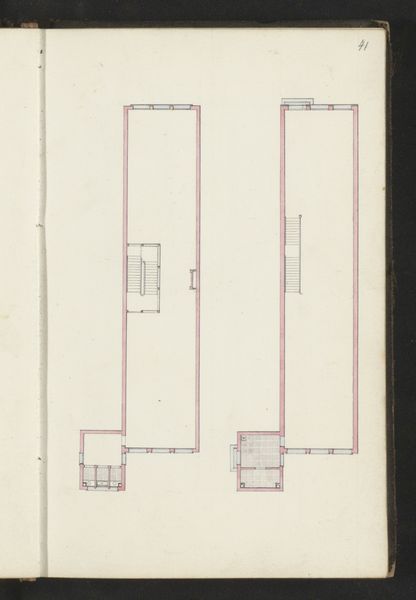
drawing, paper, ink, architecture
#
drawing
#
paper
#
ink
#
geometric
#
line
#
cityscape
#
architecture
#
building
Copyright: Rijks Museum: Open Domain
Curator: This drawing presents us with an architectural blueprint. It's titled "Plattegrond en voorgevel van een gebouw," dating approximately from 1825 to 1907, and is attributed to Willem Springer Jr. It combines ink on paper to depict both the plan and facade of a building. Editor: My first impression is one of stark, almost sterile precision. The symmetry and geometry are so meticulously rendered it feels less like a building and more like a diagram of power, perhaps even a subtle reflection on societal structures? Curator: I see what you mean. Architecturally, these symmetrical plans, particularly in church designs, are deeply connected to hierarchy and the perceived order of the universe. The clear division of space reflects specific functions and reinforces notions of order, very typical in post-Enlightenment ideologies which heavily emphasized rationality and control, mirroring the societal impulse to categorize and control its subjects. Editor: And those pillars! They strike me as powerful symbols, both literally supporting the structure and figuratively embodying the ideals of that era. Consider their circular form. It appears even, consistent, never ending, representing balance, equality and… Curator: And also conformity! The repeated use of these perfect circles creates a rhythm. But what about its purpose, as suggested by the spire visible in the facade? Churches served as not just places of worship but community centers that dictated social conduct, particularly regarding gender roles. Women often found themselves occupying different or restricted spaces within the architectural blueprint. Editor: Yes, there's an implicit cultural narrative embedded here. Think of the visual language associated with religious structures and social order. The ground plan shows clear axes and centralized layout... could suggest the eye of God over watching the activities that might occur there? It certainly encourages notions of discipline. Curator: Precisely. The use of line as a technique reduces organic, uncontrollable space. However, thinking of contemporary artistic theory we might also analyze whether this visual representation has impacted the communities. It served to impose rules that privileged the ruling social structure and that could translate into spaces of inequality. Editor: It really shows us that the facade doesn't tell the whole story, we have to delve into the symbolism within that "blueprint" to really get a fuller vision of those societal goals. Curator: Agreed. Reflecting on the history, we should critically analyze the underlying concepts depicted within architectural representation and impact of visual imagery. Editor: An exercise of symbolic exploration of cultural continuity, that makes us reflect about our preconceptions about how to design social spaces.
Comments
No comments
Be the first to comment and join the conversation on the ultimate creative platform.
